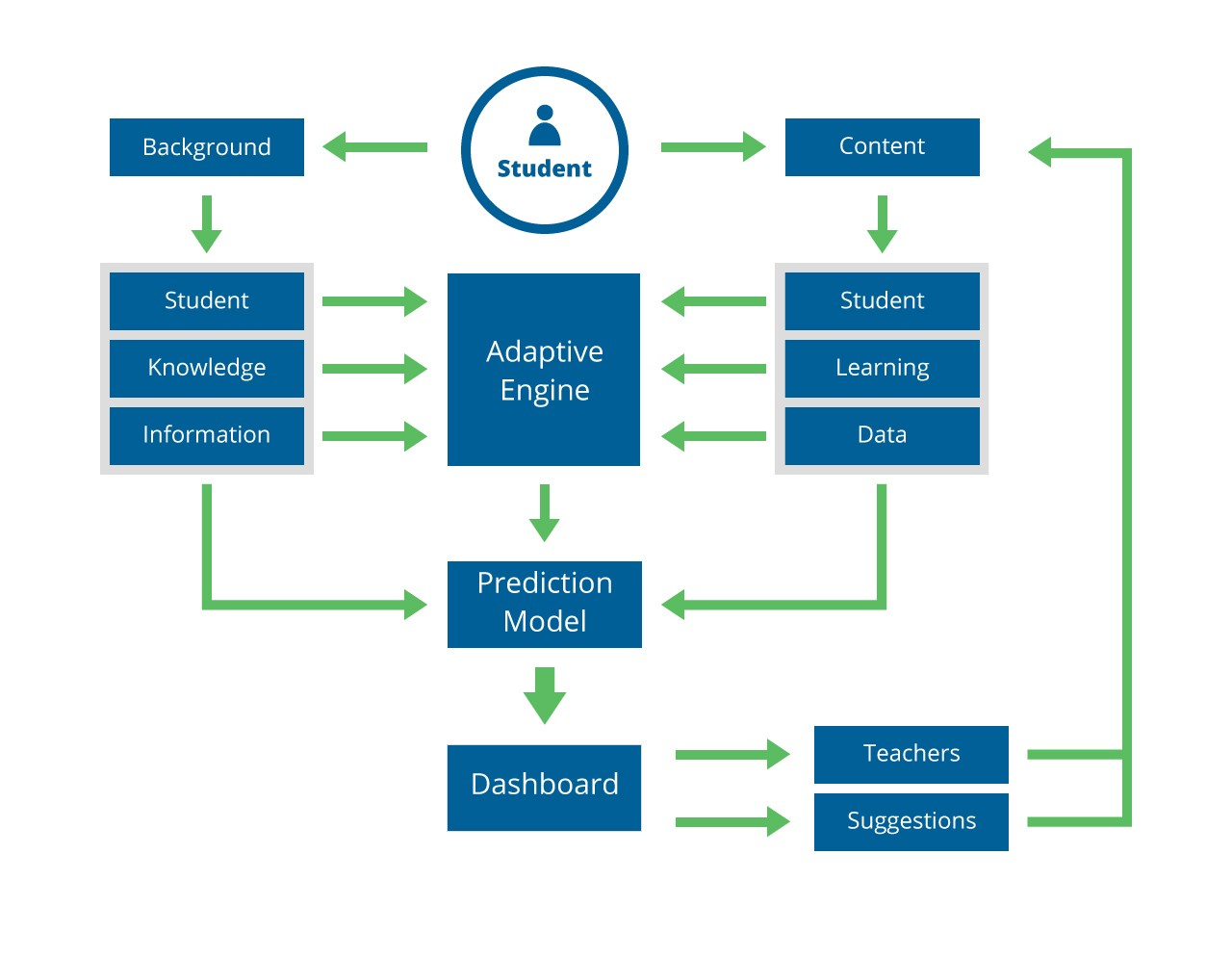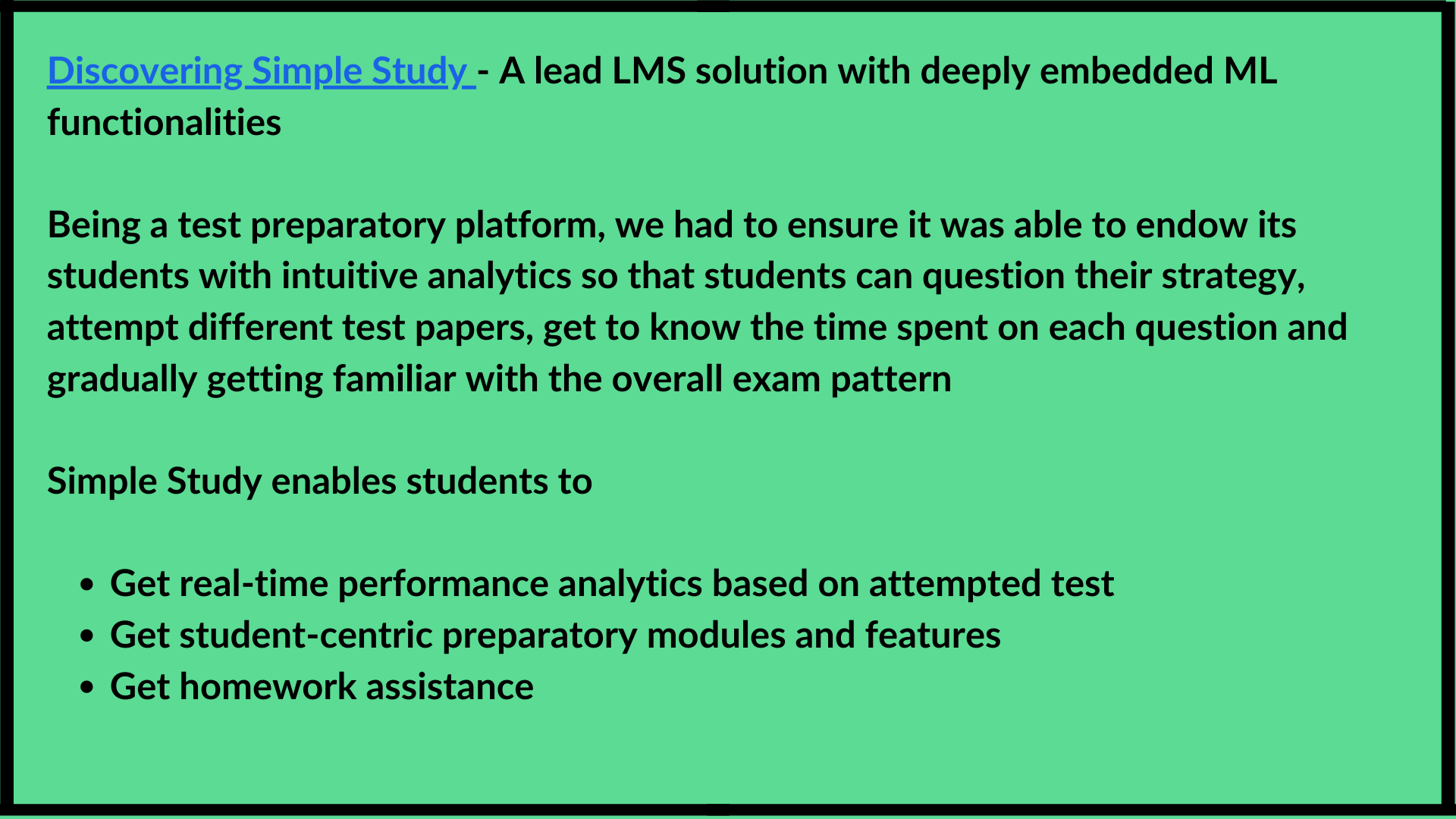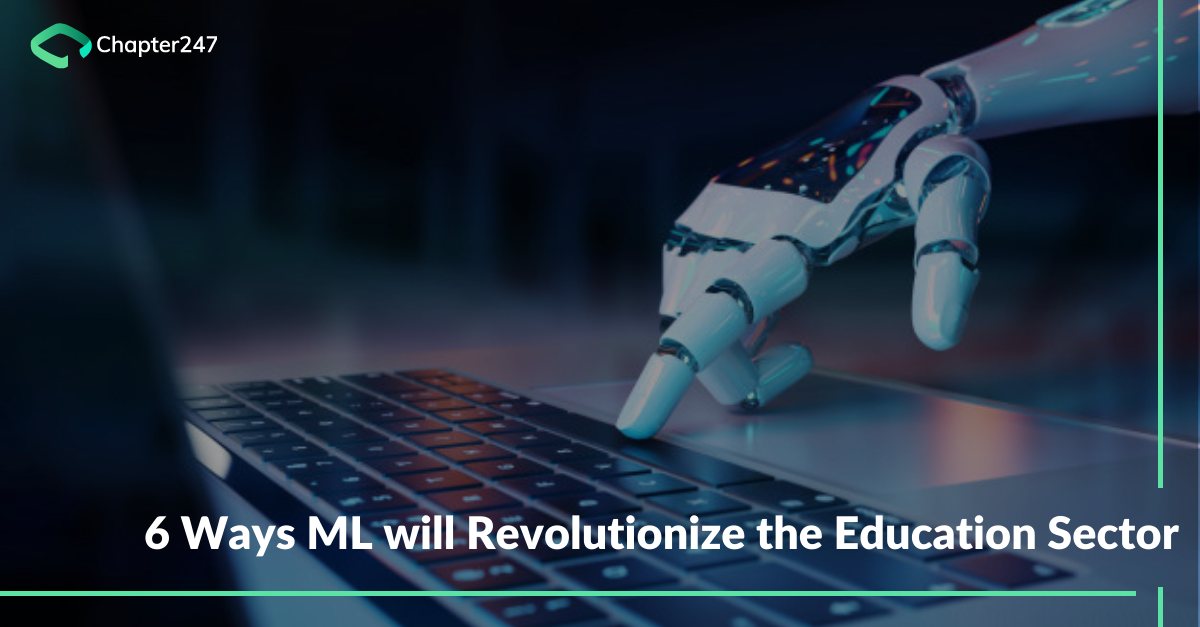Every evolution is different and difficult but with it comes a permanent shaping of the society. Innovations alter our way of life but eventually become a part of the society in terms of business processes, operational efficiency and innovative products. Education sector also has not restrained its arms to invest in creating robust infrastructures that are future-ready and emergency-proof.
Introduction of Machine Learning – a sub part of AI has created waves in technology especially the education sector. It is that time of our existence that the introduction of ML in education has become mandatory. It is high time that educational groups take advantage of technological advancements and enable modifications in their environments..
What is Machine learning?
The concept of Machine Learning allows the machine to learn from both examples and experiences. Machines do not write the code but instead data is fed in the generic algorithm. The algorithm that the machine builds is based on logic postualted on the basis of data provided.
In simpler terms it is defined as a part of the computer science discipline that uses statistical techniques to ensure that the computer systems are able to learn from experience and data. In the education sectors, Machine learning applications are seen in learning analytics and AI working in tandem for a successful outing.
It is a form of personalized learning which could be used to give every student an exceptionally individualized educational experience. Students with the help of ML follow a self-guided approach, follow pace as per their needs and make their own decisions about what they need to learn.
Develop a passion for learning. If you do, you will never cease to grow!
– Anthony J. D’Angelo
Current trends of ML in the education sector
- Machine Learning in the education sector has helped institutions adopt cloud technology reducing operational costs.
- It has also paved the way towards the development of artificial instructors, virtual assistants, intelligent tutors and many more.
- With digital-enabled classrooms, online assessments, cloud-based content coming in vogue, ML is being embraced big time.
- VR and AR is one of the biggest developments accessed from AI and ML. Universities are opting for further upgradation enabling them to give life-like experience to students.
- Adaptive learning techniques, problem analysis, speech recognition are some of the best known developments seen in the educational sector thanks to ML technology.
- Data personalization also has become easier with AI and ML. Loads of data are now being moved to intelligent systems that would analyze it and bring about significant insights.
- Students can take tests from anywhere they want thanks to online assessments. These assessments are available at multiple platforms that have an interactive personalized dashboard helping students and teachers to assess their performance.
6 ways ML is revolutionizing the education sector
Adaptive Learning
The concept of adaptive learning involves analyzing student’s performance real-time and bringing about a modification in teaching methods and the curriculum based on the data. It aims to fulfill personalized needs of individuals for a better education. The software provides insights about the learning paths the student should take. They get suggestions from learning materials to be accessed to learning methodologies to be followed.
Adaptive learning personalizes study material for the students based on the student’s performance. It identifies strengths and weaknesses as questions are categorized as well as tagged by concept. Questions are then asked by these adaptive systems according to categories. When mistakes are repeated in the category, it is sided as a student weakness. This happens real-time giving out a comprehensive landscape of the student’s overall capability and potential. The decisions that students make are tracked and used to modify the pace between their lessons. A summary reaches the teachers following the flowchart pattern as given below:
 Source Medium
Source Medium
Intelligent Tutoring system
Intelligent tutoring system serves as a personal tutor to every individual student at a lower cost. Rather than hiring a tutor for guiding a student through the course, ML analyses the entire student learning experience. Regulation of content is done and the pace of learning is also individualized. It can make learning fun by removing the innate boredom that usually is associated with the classrooms. It is considered as a medium of adaptive learning because without any human intervention, the system allows for customizing learning environments by providing feedback for every change in the learning curve. The overall dependency of students on teachers reduces.
Learning Analytics
Teachers also can get stuck while teaching, having a direct impact on the students. They do not understand what happened in the class because the insights so provided itself was not clear. Learning analytics is a gear they have which allows the teacher to gain insights into the relevant data to perform deep dives into it. Teachers can filter through the content pieces, read it, interpret it, connect it and make conclusions. This has already shown a lot of progress in terms of positive impact on the teaching and learning process.
Students also might get hesitant to ask the teacher when they do not get the gist. Mindful ML monitoring helps both teachers and students to work on the gaps noticed. Immediate feedback also is possible on how students are performing and will give a chance to students to improve and the system to suggest further scopes for improvement.
Virtual Assistants
Elearning software solutions provider companies are enabling several universities and educational groups around the world to construct their own virtual assistants. This makes the life of students and parents easy as access to information is enhanced. ML enabled virtual assistants could be used in teaching methodology to help students not just with their study course but also as an advisory. This integration has successfully melded in the education world thereby identifying the difficulties faced by the students. ML can easily replicate human behavior and an ML enabled virtual assistant can undertake responsibilities of a school counselor.
Predictive Analytics
Predictive models are usually regression-based analysis that are conducted to predict student outcomes. It uses a combination of several actionable indicators to predict an outcome that needs improvement. Most of these prediction models use measurable indicators like
- Grades
- Attendance
- Course level
- Suspensions
- Extracurricular activities and so on
Predictive analytics in education is all about knowing the mindset and needs of the students. It helps to make conclusions about the things that might happen in the future. With the class tests and half-yearly results, it could be understood which students are going to perform well in the exam and which students will have a tough time.
This helps the faculty and the parents to get alert and take appropriate measures. Through this, a student can be helped in a better way and can work on his weak subjects.
To cut the long story short, predictive analytics is all about knowing the mindset and needs of the students. It assists in making conclusions about the things that could happen in the future. This also helps parents and teachers to take appropriate measures so that the students can work on their weak points.
Recommended read: How Virtual learning is shaping the future of education
 Improved efficiency
Improved efficiency
Thanks to Machine learning applications education leaders and newbies can experience better content and curriculum management. Work gets bifurcated easily making the teacher and student work much easier and simpler. The participation from the student side also increases thereby renewing an overall efficiency in the system. Educators also can become efficient as they can complete tasks like class scheduling, class management and content readiness well before time. Educators can focus their attention on those tasks which AI is not able to do.
The focus of education also changes with students focussing on developing their best attributes while they can focus on their worst to improve it. Universities and schools can use Machine learning to also come up with personal algorithms that befits a particular student and their requirements. No two students have the same skill sets and orientation, hence in a move to increase overall efficiency, personalized approach by such universities will reap them with rich rewards. As an LMS solutions company, we can create multiple algorithms for such students that will help them build interest in their course and also help the teachers to focus on processes that would contribute to the overall efficiency.
What the future holds
The extensive use of ML will be a game-changer in the coming years. Deploying these technologies will give an opportunity to have a special focus on students by providing experimental and analytical learning processes improvising the overall process. As a top custom software development company, our edtech solutions challenge every education leader to get out of their comfort zone and bring in new opportunities to maintain management, reduce efforts and most importantly fill learning gaps.








